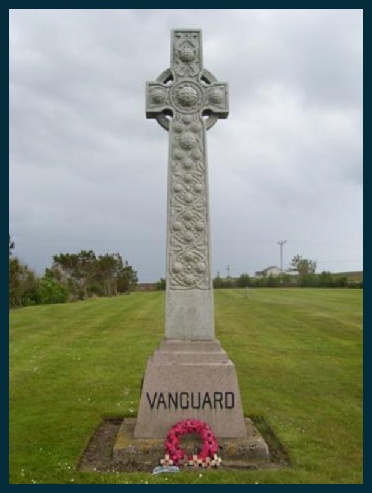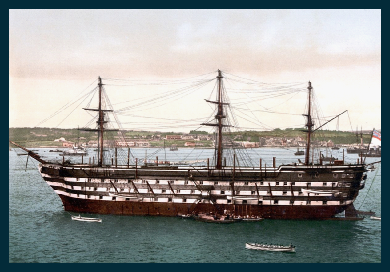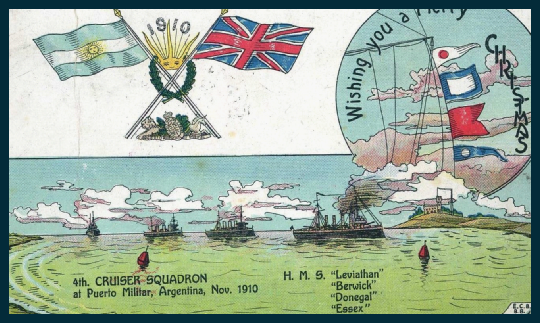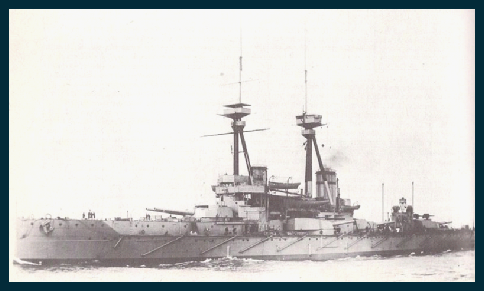Copyright © All rights reserved.



Charles Halliday


Although the explosion was obviously an explosion of the cordite charges in a main magazine, the reason for it was much less obvious. There were a number of theories. The inquiry found that some of the cordite on board, which had been temporarily offloaded in December 1916 and catalogued at that time, was past its stated safe life. The possibility of spontaneous detonation was raised, but could not be proved. It was also noted that a number of ship's boilers were still in use, and a number of the watertight doors which should have been closed in war-
A monument to the victims of the “Vanguard” disaster was erected at Lyness Royal Naval Cemetery, in Hoy in Orkney and they are also commemorated on the Chatham Naval Memorial.
Chrles is commemorated on the Town memorial and in St Leonard’s Church
Charles Guy Halliday was born on 12 August 1893 and his birth registered in the third quarter of 1893 in Malton. He was the fourth son of Edmund and Isabella Waudby (nee Duggleby) Halliday who married in the Driffield area in March 1884. Edmund was a Plumber and Glazier and at the time of the 1891 Census was living on Yorkersgate, next door to the George Hotel, with Isabella and their three sons. They seem to have been reasonably prosperous, with a live-
1891 Census –Resident at Yorkersgate, New Malton, Yorkshire
Edmund, Halliday, Head, Married, Male, 37, Plumber And Glazier, Yorkshire,
Isabella W, Halliday, Wife, Married, Female, 36, -
James E, Halliday, Son, Single, Male, 6, Scholar, Yorkshire,
Francis H, Halliday, Son, Single, Male, 2, -
John R, Halliday, Son, Single, Male, 0, -
Eliza J, Kilvington, Servant, Single, Female, 17, General Servant Domestic, Yorkshire, Pickering,
By 1901 the family had moved to a sizeable semi-
1901 census – resident at 80 Newbiggin
HALLIDAY, Isabella W, Head, Widow, F, 46, , Cottom Langtoft Yorkshire,
HALLIDAY, James E, Son, Single, M, 16, Assts M Boro Surveyors Office, Welton Nr Brough Yorkshire,
HALLIDAY, Francis H, Son, Single, M, 12, School, Welton Nr Brough Yorkshire,
HALLIDAY, Charles G, Son, Single, M, 7, School, Malton Yorkshire,
HEWITT, Florence, Servant, Single, F, 18, General Servant (Domestic), Swinton Yorkshire,
According to the Malton Mercury he was in Brazil during the riots that occurred in 1911 during the election in Rio de Janeiro, but this is not borne out by his service record which shows him on H.M.S Shannon, at that time undergoing repairs and refit at Portsmouth. However it may refer to the naval mutinies in Brazil in November and December 1910, at a time when he would have been on H.M.S Leviathan off South America.
He joined H.M.S. Vanguard in 1913 and served on her for the rest of his life.

When Charles left school he got a job as a clerk with a solicitor, Mr A. E. B. Soulby, but in 1909 he left this work to join the Navy.
The first few years of his service was at a variety of shore-


On the afternoon of 9 July 1917 the ship's crew had been exercising, practising the routine for abandoning ship. She anchored in the northern part of Scapa Flow at about 18.30. There is no record of anyone detecting anything amiss until the moment of the explosion at 23.20.
A court of inquiry heard accounts from many witnesses on nearby ships. They accepted the consensus that there had been a small explosion with a white glare between the foremast and "A" turret, followed after a brief interval by two much larger explosions. The Court decided, on the balance of the available evidence, that the main detonations were in either "P" magazine, or "Q" magazine, or both. A great deal of debris thrown out by the explosion landed on nearby ships; a section of plating measuring some five feet by six feet landed on board Bellerophon. It was found possible to match it with a sister ship, and it was found to be from the central dynamo room, which reinforced the evidence suggesting that the explosion took place in the central part of the ship.

The eighth HMS Vanguard of the British Royal Navy was a St Vincent-
Just before midnight on Monday, 9 July 1917 at Scapa Flow, Vanguard suffered an explosion, probably caused by an unnoticed stokehold fire heating cordite stored against an adjacent bulkhead in one of the two magazines which served the amidships gun turrets 'P' and 'Q'.